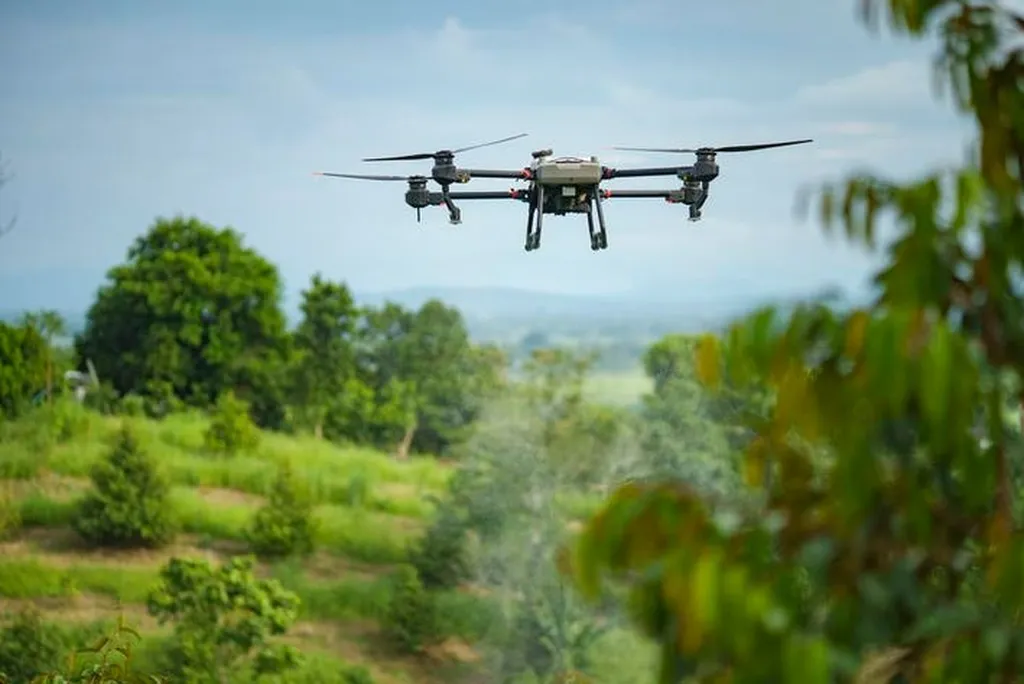In the heart of India, researchers are harnessing the power of drones and machine learning to revolutionize the way we monitor and manage crop health, with significant implications for the energy sector. Bhavneet Gulati, a scientist from the Computational Biology Department at the CSIR–Central Institute of Medicinal and Aromatic Plants in Lucknow, has led a groundbreaking study that could transform precision agriculture.
The research, published in the journal *Drones* (translated to English as “Drones”), focuses on *Mentha arvensis*, a plant known for its aromatic properties and use in various industries, including energy production. The study aims to develop a non-invasive method for estimating nitrogen levels in plants using unmanned aerial vehicles (UAVs) equipped with multispectral sensors and advanced machine learning techniques.
Nitrogen is a crucial nutrient for plant growth, but its improper application can lead to reduced productivity and long-term soil degradation. Traditional methods of nitrogen estimation often involve destructive sampling, which can be time-consuming and labor-intensive. Gulati’s research offers a more efficient and sustainable alternative.
“We aimed to develop a non-invasive approach for nitrogen estimation through proxies in *Mentha arvensis* using UAV-derived multispectral vegetation indices and machine learning models,” Gulati explained. The team employed Support Vector Regression, Random Forest, and Gradient Boosting algorithms to predict the Nitrogen Flavanol Index (NFI) across different growth stages of the plant.
The results were promising. The Random Forest model achieved the highest predictive accuracy at 75 days after planting, with an R-squared value of 0.86 and a root mean square error (RMSE) of 0.32. Gradient Boosting followed closely behind, with an R-squared value of 0.75 and an RMSE of 0.43. While model performance was lower during the early growth stages (15–30 DAP), it improved significantly from mid to late growth stages (45–90 DAP).
This research has profound implications for the energy sector, particularly for companies involved in bioenergy production. By optimizing nitrogen application, farmers can enhance crop yield and quality, leading to a more sustainable and efficient supply chain for bioenergy feedstocks. Moreover, the use of UAVs and machine learning can reduce the need for manual labor and destructive sampling, lowering operational costs and environmental impact.
Gulati’s work is a testament to the power of technology in driving sustainable agriculture. “Our findings highlight the significance of UAV-acquired data coupled with machine learning approaches for non-destructive nitrogen flavanol estimation,” she said. “This can immensely contribute to improving real-time crop growth monitoring.”
As the world grapples with the challenges of climate change and resource depletion, innovations like these are more important than ever. By leveraging the latest advancements in technology, we can pave the way for a more sustainable and efficient future in agriculture and energy production. This research not only shapes the future of precision agriculture but also underscores the potential of interdisciplinary collaboration in addressing global challenges.

